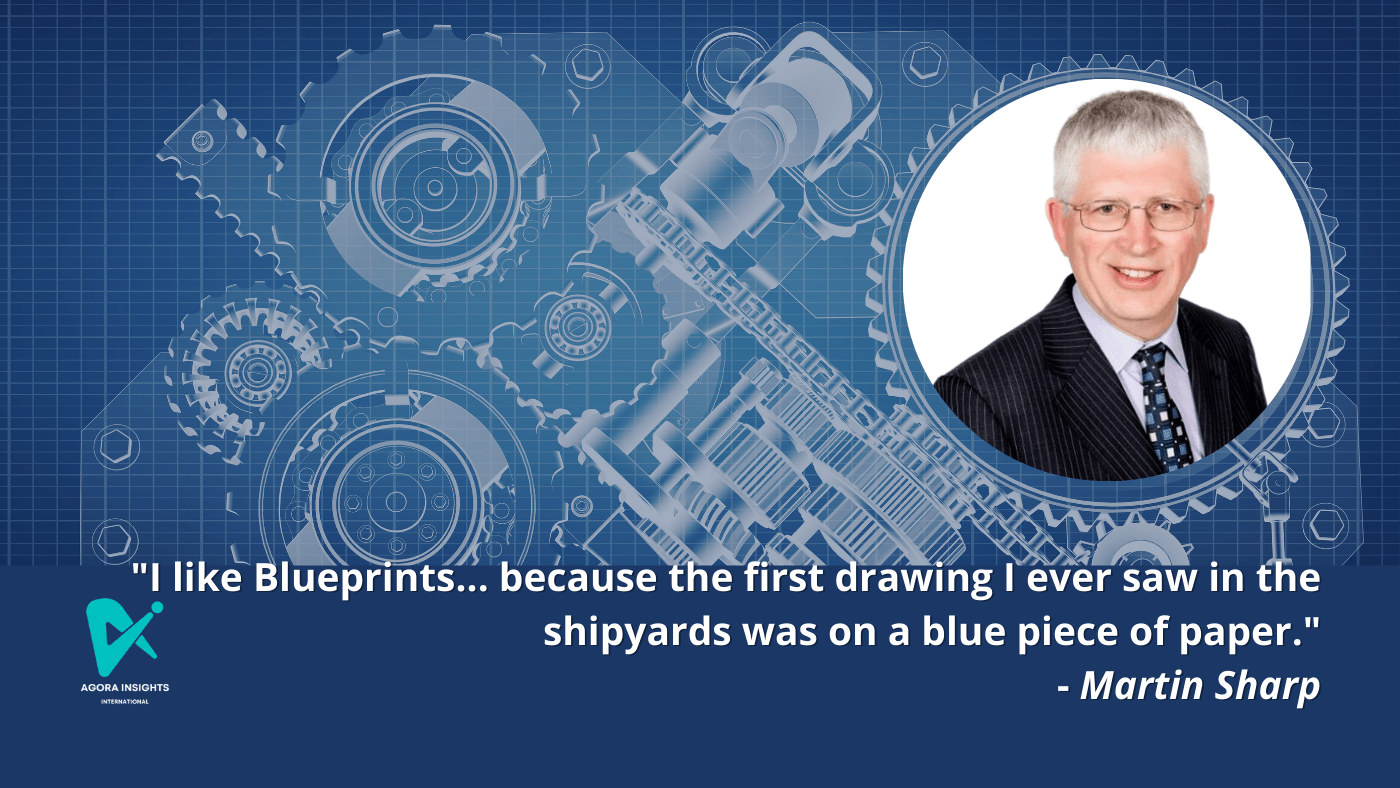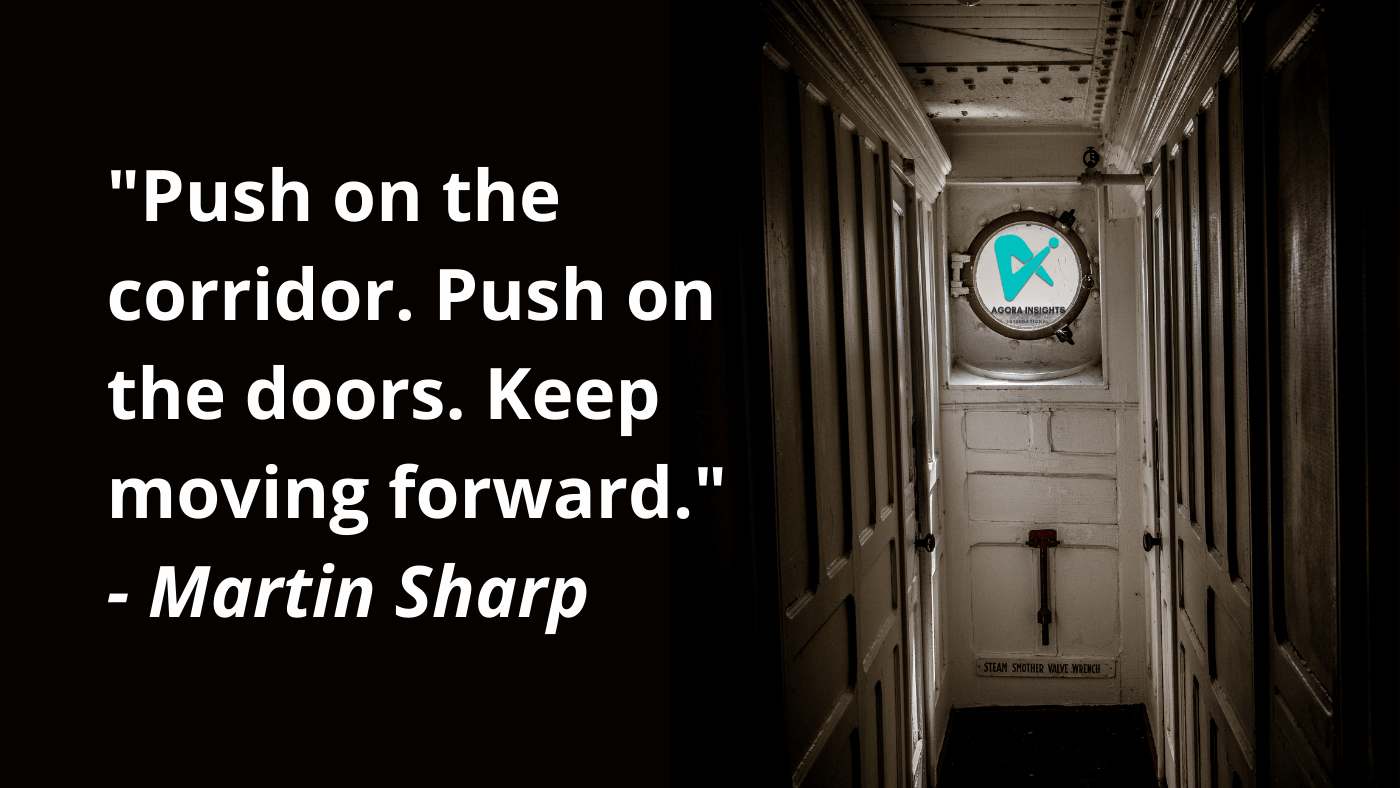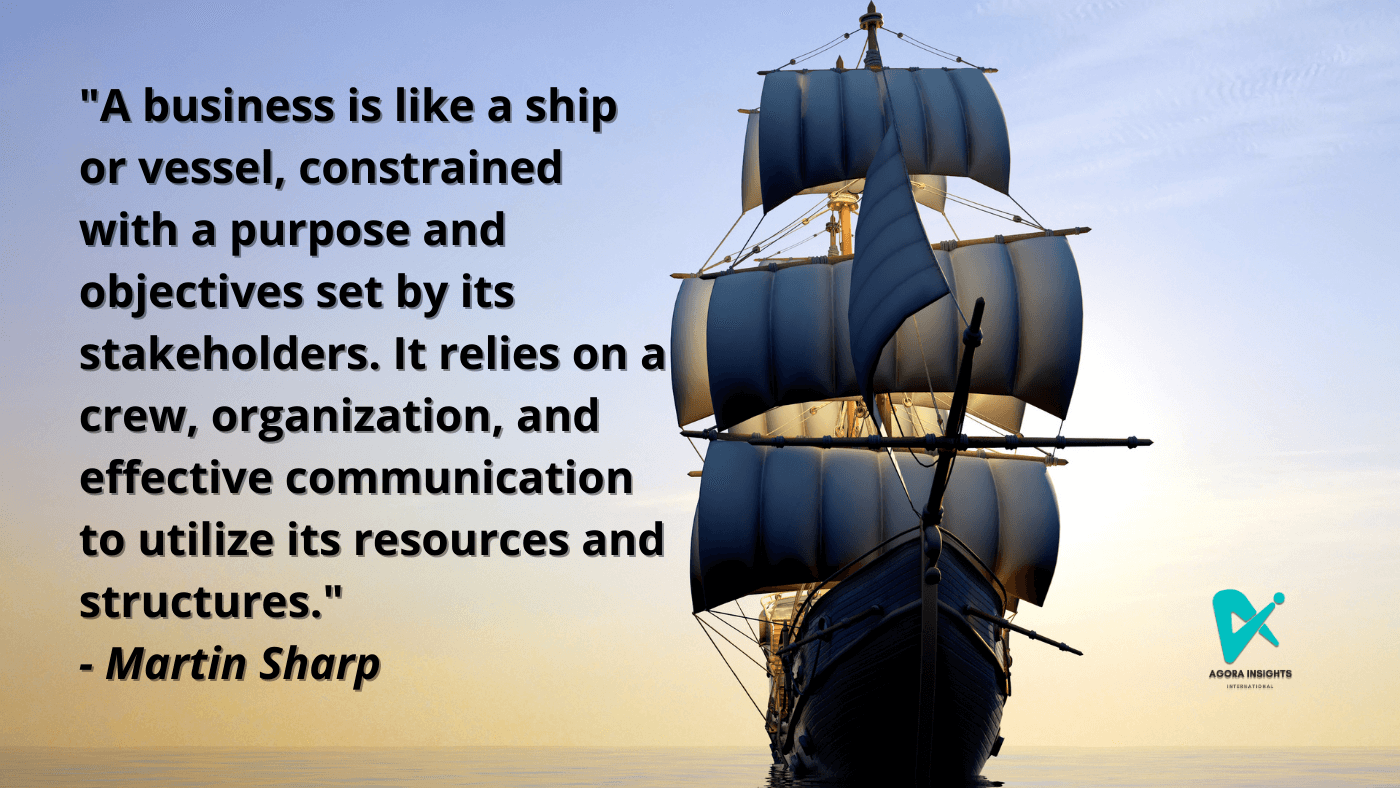Hosted by Deirdre Caren on Agora Insights' Blueprints for Success - Business Architectural Odyssey

It's always a pleasure to speak with Martin Sharp, an experienced and passionate professional in the field of naval, business and enterprise architectural design. We spoke about his career path from traditional naval architecture to the innovative world of business modeling.
Martin's journey began with a fascination for boats, leading him to naval architecture. This foundation in precise design and problem-solving set the stage for his later ventures into software development and, ultimately, business and enterprise architecture. Today, he champions user-focused design (putting people at the centre) and embodies a narrative of continuous learning and adaptability.
In our interview, Martin questioned the absence of prototyping in business, remarking that he has never understood why businesses don't prototype and model. Nobody, he stated, designs a car or a ship or a building or even a toaster without creating a model of it first.
"Why do we go ahead and spend millions of pounds reorganizing, designing a business and then think, oh, hmm, I wish I'd had a go at trying that differently. Could I try it first?"
- Martin Sharp
Background
Martin Sharp's career is a testament to where curiosity and passion can lead. His childhood interest in boats charted a course towards naval architecture, a field where he honed his skills in designing ships and submarines. These early experiences laid the foundation for his adeptness in modeling and problem-solving. As his career progressed, Martin transitioned into software development for cable harnesses, further expanding his expertise. Eventually, his path led him to enterprise and business architecture, where he now applies his wealth of knowledge to model intricate business environments, demonstrating the universal value of his architectural acumen. In his current role, he advocates for a user-centric approach to design and the integration of advanced AI tools to address modern challenges in architecture. His career is a narrative of lifelong learning and a willingness to embrace change.
I enjoyed the following explanation from Martin. To put it into context, he draws an analogy between the structure and operation of a ship and the structure and operation of a business, highlighting the similarities in how both are organized and function.
"I've always thought that that's just like a business...
a ship, a vessel, submarine, whatever it happens to be.
It's constrained. It's got a boundary. It has a purpose.
It has clear objectives that are set by whoever wants that particular vessel.
But importantly, it has a crew, it has people.
It has an organisation and that organisation has to use the cables and the engines and their structures and everything else and they have to have communications to make it all work."
- Martin Sharp
3 Key Topics
1. The Essence of Modelling:
Martin sees modelling as a fundamental exercise in abstraction and representation, aimed at solving complex problems. His early experiences with creating a physical model boat that could float properly set the stage for his approach to business architecture. It's about understanding the core elements that need representation and focusing on those, rather than getting lost in the minutiae. This principle holds true whether you're designing a ship or mapping out an organization's structure. It's about capturing what's essential for the purpose at hand and not necessarily creating a one-to-one replication of reality.
"Only produce a drawing or a model if it's to solve a problem and you know who it is for."
- Martin Sharp
2. The Role of Enterprise Architecture:
Enterprise architecture is not just about drawing diagrams or documenting processes; it's about testing the waters before diving in. Martin's vision of digital twins for businesses is particularly intriguing. Just as engineers test physical models, organizations could benefit from simulating changes in a controlled digital environment. This could allow for a better understanding of potential impacts and outcomes, saving time and resources while reducing the risk associated with transformational changes.
3. Incorporating AI in Architecture:
Artificial Intelligence (AI) seems to be the frontier that we're all inching towards, and Martin's insights on its potential role in architectural design are compelling. AI could enable architects to explore scenarios and ask questions that might be beyond our immediate grasp due to complexity. The idea of AI assisting in modeling human elements, behaviors, and cultural impacts within businesses is a game-changer. It's not about AI replacing the human touch but rather augmenting our capabilities to understand and shape the organizations we work with.Throughout his career, Martin has demonstrated a remarkable ability to adapt and apply his architectural skills to a range of challenges, always with the intent to unravel complexity and find effective solutions. His qualifications and experiences make him a seasoned voice in the field, offering a rich perspective on strategy and the evolution and future of enterprise and business architecture.
10 Key Learning Points
- Model with Purpose: Create models only to solve specific problems and for a known audience. And make models for the people to understand what you are doing.
- Understand Your Tools: Leverage the capabilities of software and AI to enhance your modeling and representation of business structures.
- Embrace Engineering Mindset: Engineers' problem-solving skills make them excellent candidates for roles in business and enterprise architectural design.
- Value Artistic Perspective: Artists can offer a unique viewpoint in modeling by capturing the essence of what they perceive.
- Seek Collaboration: Just as shipyards once collaborated with software vendors to meet their modeling needs, organizations today can benefit from similar partnerships.
- Consider Non-Functional Aspects: When modeling, go beyond the functional requirements and consider the user experience and the non-functional elements.
- Be Agile and Adaptable: Stay open to change and be willing to explore new technologies and methodologies as they emerge.
- Recognize the Human Element: Understand that any change in an organization will impact its people, and model accordingly. And think about what the people want to do, to achieve.
- Push Boundaries: Think from different roles. Ask IT what they are going to do to help solve this problem. Always look for ways to expand the capabilities of modeling, including representing human interactions and behaviors.
- Maintain a Learning Attitude: Continuously seek knowledge and be willing to learn from various disciplines to enhance your architectural skills.
Conclusion
Martin's insights provide a unique lens through which we can view the field of business and enterprise architecture. His journey from naval to business architecture, his thoughts on the integration of AI tools, and his advice on embracing change and opportunities are invaluable for professionals at any stage of their career. As we look to the future, it's clear that the ability to adapt and innovate will be crucial in navigating the evolving world of business architecture. I leave you with the following quote from our interview...
"I wanted to build something. It didn't work...
so I built a model to solve that problem."
- Martin Sharp
Feel free to share in our Blueprints for Success Podcast or comment with any questions!

Feel free to share in our Blueprints for Success Podcast or comment with any questions!
To get weekly videos and interviews from leaders around the world subscribe to our Blueprints for Success Newsletter on LinkedIn
To watch more videos, visit YouTube.
Interested in business architecture and business analysis certification and corporate training? Go to our website www.agorainsights.com
Have you heard about Aidon.ai?
Contact Deirdre Caren on LinkedIn https://www.linkedin.com/in/deirdrecaren/
From Martin
My current role is more about implementing Architecture Modelling Tools at the Bank.
It is interesting that my career has almost done a complete circle. I started making models of boats when at school then became a Naval Architect, then produced the first ever digital model of a Nuclear Submarine. I then went on to work in Enterprise Architecture and again sold EA modelling tools ending up employed at the Bank to set up a Business architecture practice.
So, my life has always been around helping people understand and solve complex problems through creating models.
Martin Sharp - LinkedIn
Post sponsored by Agora Insights Ltd




Post a Comment